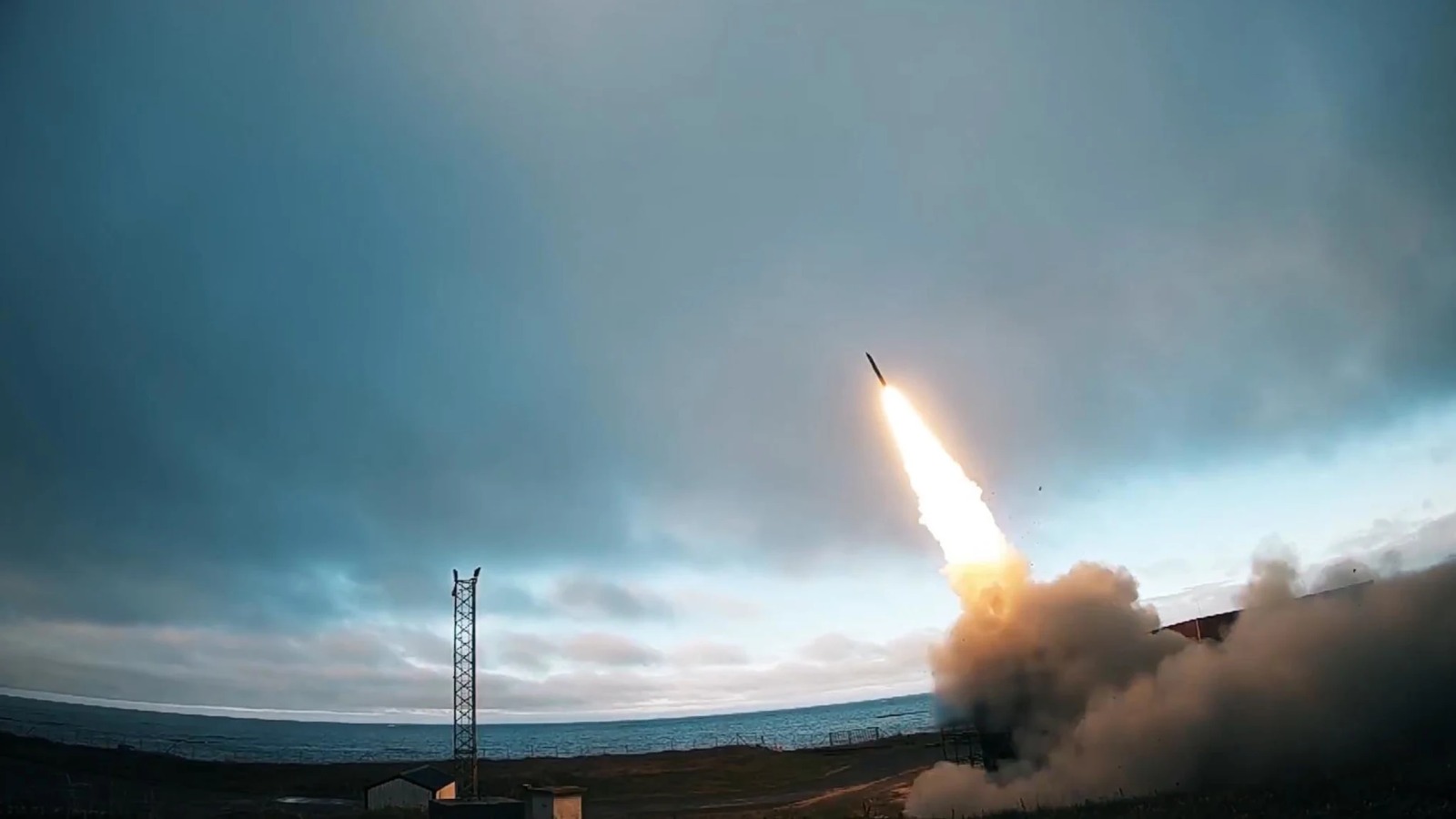Touted as a weapon that can target high-value enemy assets in the rear, the Ground Launched Small Diameter Bomb (GLSDB), developed by Boeing and Saab, has been on the watch list since February 2023.
The long-awaited Ground Launched Small Diameter Bomb (GLSDB) has made its inaugural appearance on the Ukrainian battlefield, marking the introduction of a powerful new long-range strike capability for Ukraine in the face of ammunition shortages.
Video footage, initially disseminated on February 14 via the Telegram messaging app by a Russian military blogger identified as Ratnik2nd, provides compelling evidence of the GLSDB’s deployment.
The video shows remnants of the weapon that align with GLSDB components. Among the wreckage displayed in the video, a distinctively square-shaped element with steering surfaces and a barcode stood out.
The bomb’s debris in the footage facilitated OSINT analysts in identifying the tail section of the GBU-39/B Small Diameter Bomb (SDB), a part of the GLSDB, along with the jet engine from the M26 unguided rocket.
This development comes after a protracted delay since the GLSDB was first promised to Ukraine in February 2023. The timing of the GLSDB’s arrival coincides with earlier reports suggesting that the first batch of these precision-guided weapons was scheduled to reach Ukraine by January 31.
First confirmation that the long-anticipated GLSDB arrived in Ukraine and is used by the Armed Forces of Ukraine.
The video showing the remains of the weapon was shared by the Russian side.https://t.co/H57AxdqZye pic.twitter.com/ldRZoonhak
— Status-6 (Military & Conflict News) (@Archer83Able) February 14, 2024
At that time, Pentagon Press Secretary Pat Ryder acknowledged the imminent delivery of GLSDBs to Ukraine but declined to disclose specific timelines, citing concerns about operational security. The Ukrainian military had also not officially confirmed this timeline.
Meanwhile, Russian authorities claim to have discovered GLSDB wreckage after a strike on Russian forces near Kreminna in eastern Ukraine’s Luhansk Oblast on February 13.
In an article for Forbes, defense expert David Axe suggested that the strike might have targeted Russian rocket launchers near Zhytlivka. According to Axe, a Ukrainian drone observed the launchers exploding in a dramatic fireball.
However, the choice of utilizing deep-strike munitions in such close proximity to the front line raises inquiries about the rationale behind employing GLSDBs for a relatively shallow raid.
Axe speculates that there might have been extenuating circumstances, such as a GLSDB launcher being strategically positioned for a short-notice strike on Russian launchers. Another possibility is that adjacent tube artillery batteries were critically low on conventional shells, making the deployment of GLSDBs a practical choice.
That being said, the Ukrainian Armed Forces made history by becoming the first in the world to deploy the GLSDB, a cutting-edge glide bomb not currently in the US arsenal, with the capability to strike targets within an operational range of 150 kilometers.
Ground Launched Small Diameter Bomb (GLSDB)
Boeing and Saab collaborated on the development of the GLSDB, aiming to merge the adaptability of ground launchers with the precision and cost-effectiveness of small guided bombs.
Way back in November 2022, Reuters reported that the Pentagon was thinking about supplying Ukraine with cheap, small precision bombs fitted onto easily available rockets, allowing strikes far behind Russian lines or 100 miles away — even as the West struggled to meet demand for more arms.
At that time, the US and allied military inventories were shrinking even as Ukraine faced an increasing need for more sophisticated weapons. Among the plans were those of Boeing that proposed the GLSDB production for Ukraine and America’s Eastern European allies, Reuters, quoting industry sources, said.
Despite its modest warhead size, containing less than 20 kilograms of explosives, the GLSDB boasts a remarkable 150-kilometer operational range, along with high maneuverability and cost efficiency. These features enable it to target high-value enemy assets in the rear without expending expensive Western missiles.
Technically introduced as a new weapon in 2023, the GLSDB is essentially a fusion of existing components: a precision-guided 250-pound aircraft bomb combined with an M26 rocket, both of which have been in separate use for decades. Ukraine now has the distinction of being the first nation to deploy this integrated form of the weapon in combat.
Upon launch, the rocket motor propels the munition, then disengages as the wings unfold, allowing the SDB to glide toward its target with precision aided by a GPS-aided inertial navigation system claimed to be accurate within one meter.

Compatible with existing platforms such as the HIMARS and M270 multiple-launch rocket system, the GLSDB can also be fired from a customized launcher camouflaged as a shipping container, leveraging Ukraine’s existing infrastructure.
The design and specifications of the GLSDB suggest its origin as a solution to the surplus of unused M26 rockets in the US military’s inventory during the War on Terror while simultaneously providing an affordable option for countries lacking an air force to acquire guided bomb capabilities.
One of its key advantages lies in its cost-effectiveness and use of readily available components, with the bomb itself priced at around $40,000, and the addition of a rocket only marginally increasing the cost.
With a striking range of approximately 94 miles, the GLSDB offers nearly double the reach of the 50-mile GMLRS munitions fired by HIMARS and MLRS systems provided to Ukraine.
Although not particularly fast over long distances, the GLSDB compensates with exceptional aerial maneuverability, allowing it to approach targets from various angles and directions, potentially nullifying many forms of defensive cover.
Further, the manufacturer claims that the GLSDB is equipped with an advanced anti-jamming system to counter anticipated electronic countermeasures from Russia.
.
- Contact the author at ashishmichel(at)gmail.com
- Follow EurAsian Times on Google News




